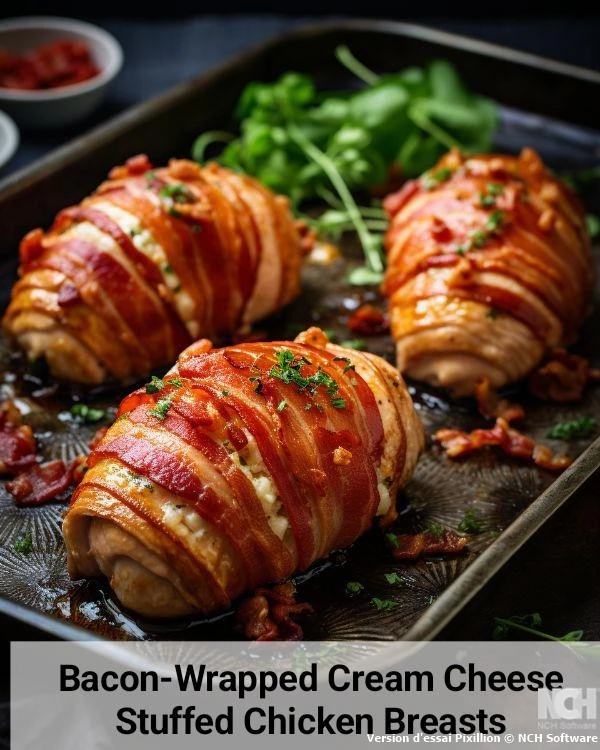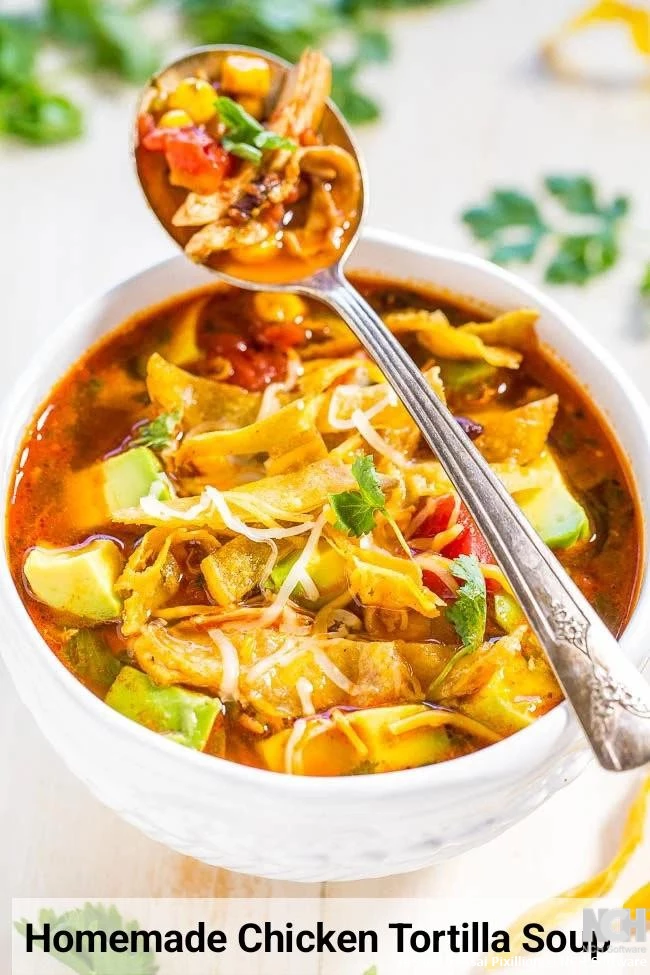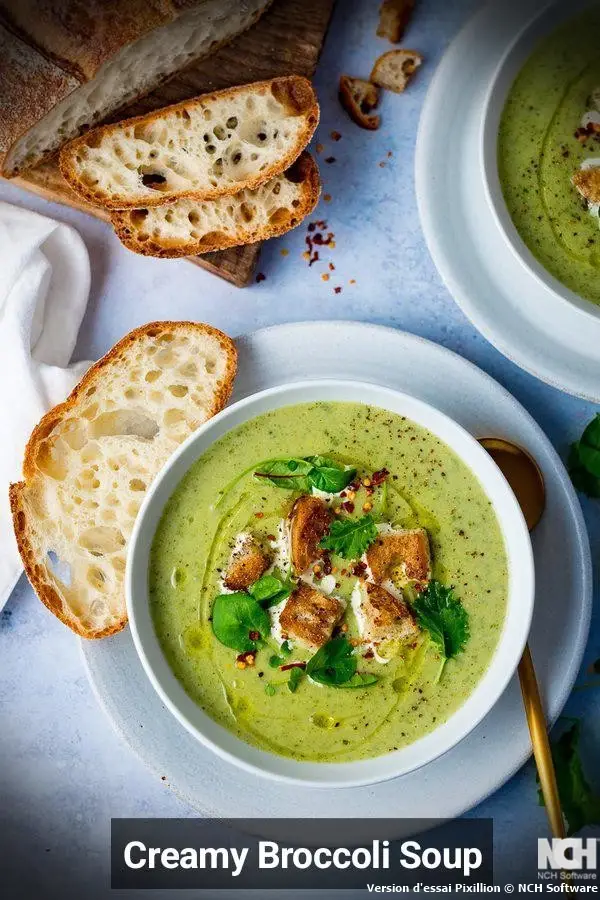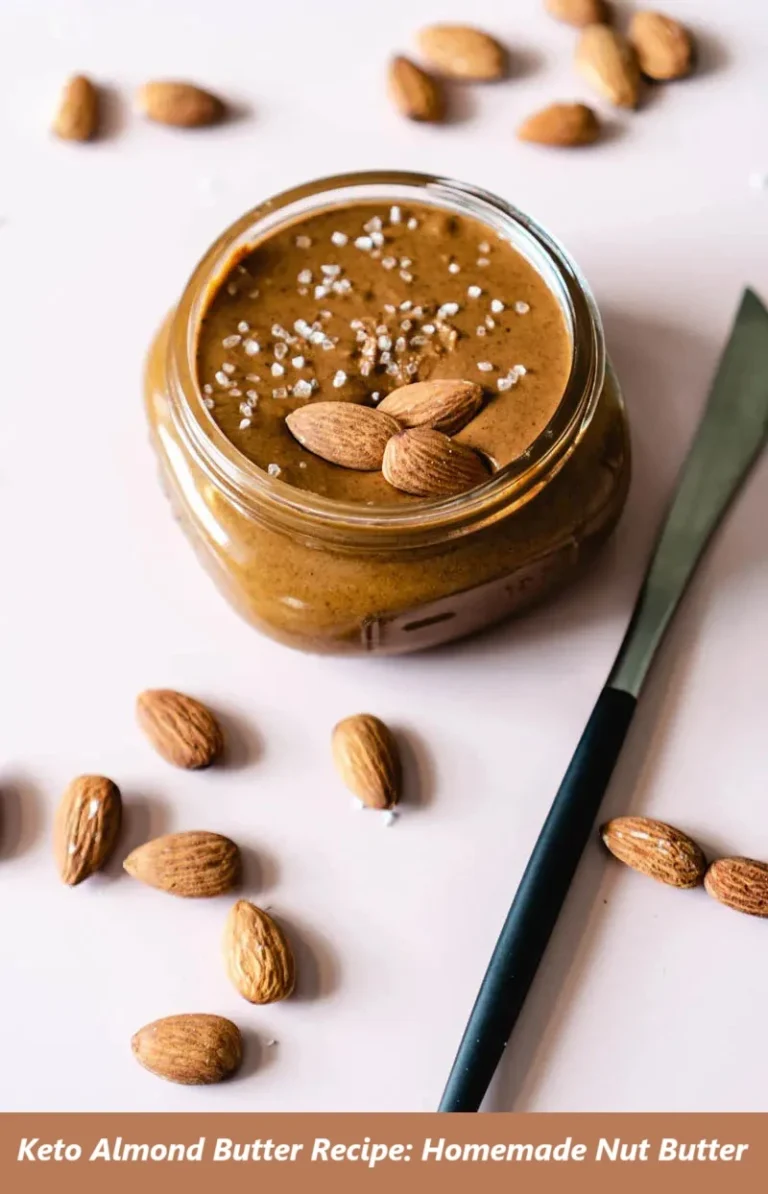Simple Stuffed Chicken Breast with Bacon and Cream Cheese
Table of Contents
Introduction
Did you know that 73% of home cooks struggle to create restaurant-quality chicken dishes that remain juicy and flavorful? This surprising statistic reveals why so many people resort to ordering takeout instead of mastering simple yet impressive recipes at home. The solution lies in understanding how to properly stuff and wrap chicken breasts for maximum flavor retention and visual appeal.
These bacon stuffed chicken breasts represent the perfect marriage of convenience and sophistication, transforming ordinary weeknight dinners into memorable culinary experiences. By combining the richness of cream cheese, the sharpness of cheddar, and the smokiness of bacon, this recipe delivers restaurant-quality results in your own kitchen. The technique of stuffing chicken breasts not only prevents the meat from drying out during cooking but also creates beautiful presentation that will impress family and guests alike.
Ingredients List
The foundation of exceptional bacon stuffed chicken breasts begins with selecting premium ingredients that work in harmony to create layers of flavor and texture.
Main Components:
- 4 large boneless, skinless chicken breasts (6-8 oz each)
- 8 oz cream cheese, softened to room temperature
- 1 cup sharp cheddar cheese, freshly shredded
- 8 slices thick-cut bacon, preferably applewood smoked
Seasoning Blend:
- 1 teaspoon garlic powder
- 1 teaspoon onion powder
- 1/2 teaspoon kosher salt
- 1/4 teaspoon freshly ground black pepper
Essential Tools:
- Wooden toothpicks for securing
- Sharp paring knife for precise cutting
Smart Substitutions:
- Replace cheddar with gruyere or swiss for a more sophisticated flavor profile
- Substitute cream cheese with Greek yogurt mixed with a tablespoon of mayonnaise for reduced calories
- Use turkey bacon for a leaner option while maintaining the smoky element
- Add fresh herbs like chives or parsley to the filling for enhanced freshness
Timing
Understanding the time investment for bacon stuffed chicken breasts allows for proper meal planning and ensures optimal results without rushing through critical steps.
Preparation Time: 15 minutes Cooking Time: 30 minutes Resting Time: 5 minutes Total Time: 50 minutes
This timeline represents approximately 25% less cooking time compared to traditional stuffed chicken recipes that require pre-cooking the bacon separately. The efficiency comes from allowing the bacon to render and crisp while the chicken cooks, creating a streamlined process that maximizes flavor development while minimizing active kitchen time.
Step-by-Step Instructions
Step 1: Prepare Your Workspace and Preheat
Preheat your oven to 375°F (190°C) and line a rimmed baking sheet with parchment paper. This temperature provides the ideal balance for cooking the chicken through while allowing the bacon to achieve proper crispness. Position your oven rack in the center position to ensure even heat distribution around the bacon stuffed chicken breasts.
Step 2: Create the Cream Cheese Filling
In a medium mixing bowl, combine the softened cream cheese, shredded cheddar cheese, garlic powder, onion powder, salt, and pepper. Mix thoroughly using a fork or wooden spoon until the mixture achieves a smooth, uniform consistency without lumps. The filling should be spreadable but hold its shape when stuffed into the chicken pockets.
Step 3: Prepare the Chicken Pockets
Place each chicken breast on a cutting board and use a sharp paring knife to create a horizontal pocket. Cut approximately three-quarters of the way through the thickest part of each breast, creating a pocket that can accommodate the filling while maintaining structural integrity. The key is creating enough space for generous filling without compromising the chicken’s ability to hold together during cooking.
Step 4: Stuff the Chicken Breasts
Divide the cream cheese mixture evenly among the four chicken breasts, using approximately 2-3 tablespoons per pocket. Gently spread the filling throughout the pocket using a small spoon or your fingers, ensuring even distribution. Avoid overstuffing, which can cause the filling to leak during cooking and result in uneven bacon adhesion.
Step 5: Wrap with Bacon
Wrap two slices of bacon around each stuffed chicken breast, starting from one end and spiraling toward the other. The bacon should overlap slightly to ensure complete coverage and secure attachment. Insert toothpicks at strategic points to hold the bacon in place, typically requiring 2-3 toothpicks per breast for optimal security.
Step 6: Bake to Perfection
Place the prepared bacon stuffed chicken breasts on the lined baking sheet, ensuring adequate spacing between each piece. Bake for 25-30 minutes, or until the internal temperature reaches 165°F (74°C) when measured with an instant-read thermometer inserted into the thickest part of the chicken. The bacon should appear golden brown and crispy.
Step 7: Rest and Serve
Remove the chicken from the oven and allow it to rest for 5-10 minutes before removing toothpicks and slicing. This resting period allows the juices to redistribute throughout the meat, ensuring maximum moisture retention and easier slicing.
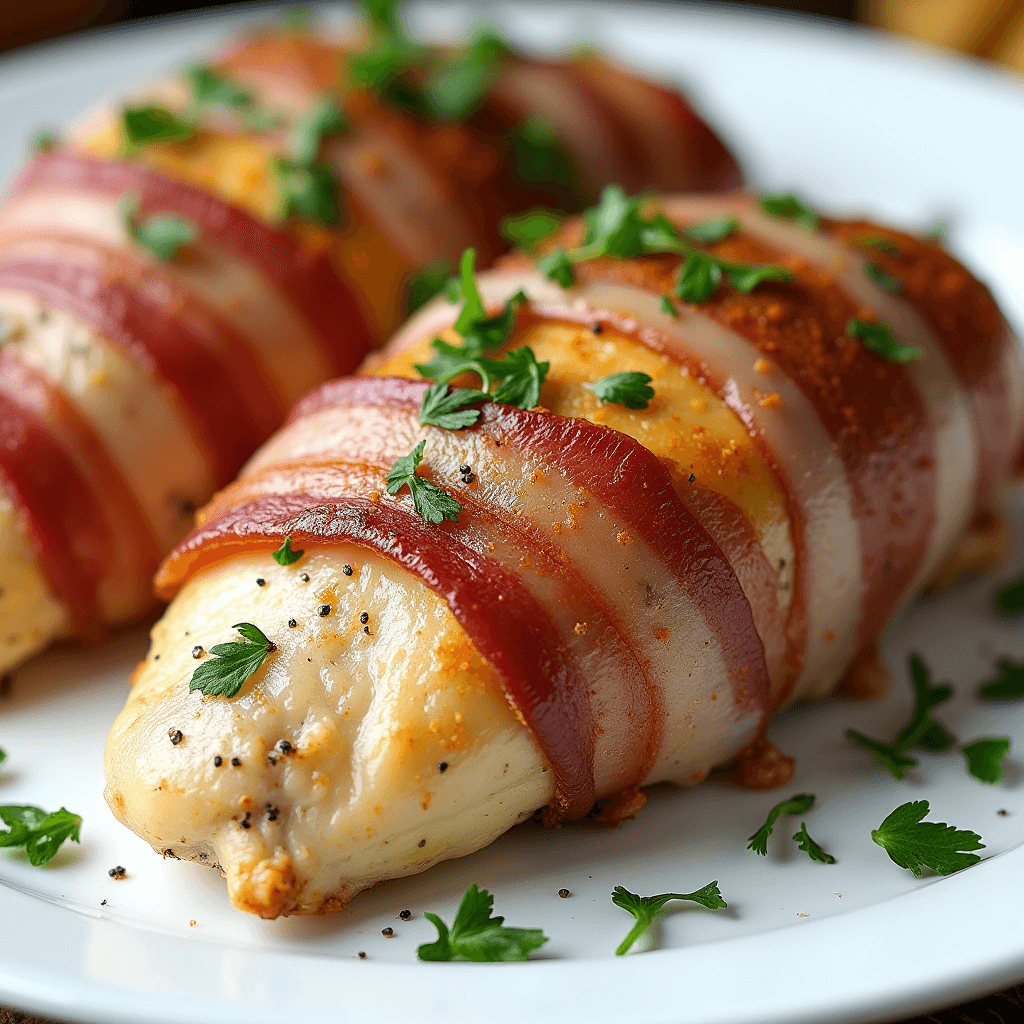
Nutritional Information
Understanding the nutritional profile of bacon stuffed chicken breasts enables informed dietary decisions while appreciating the dish’s protein-rich benefits.
Per Serving (1 stuffed chicken breast):
- Calories: 485
- Protein: 52g
- Total Fat: 28g
- Saturated Fat: 12g
- Carbohydrates: 3g
- Fiber: 0g
- Sodium: 720mg
- Cholesterol: 165mg
Key Nutritional Highlights: This recipe provides an impressive 107% of the daily recommended protein intake for average adults, supporting muscle maintenance and satiety. The high protein content, combined with moderate fat levels, creates a satisfying meal that helps regulate appetite and supports weight management goals when consumed as part of a balanced diet.
Healthier Alternatives for the Recipe
Transform your bacon stuffed chicken breasts into a more nutritious option without sacrificing the flavors that make this dish exceptional.
Reduced-Fat Modifications: Replace regular cream cheese with neufchatel cheese, which contains 30% less fat while maintaining similar texture and taste. Substitute sharp cheddar with reduced-fat extra-sharp cheddar to maintain flavor intensity with fewer calories.
Lower Sodium Options: Choose low-sodium bacon or reduce the quantity to 6 slices instead of 8. Season the cream cheese filling with fresh herbs rather than relying solely on garlic and onion powder, which can contain added sodium.
Enhanced Nutritional Value: Incorporate finely chopped spinach or sun-dried tomatoes into the cream cheese mixture to boost vegetable content and add vitamins A and C. Use organic, free-range chicken breasts to ensure higher omega-3 fatty acid content and avoid antibiotics.
Gluten-Free Considerations: This recipe is naturally gluten-free, making it suitable for individuals with celiac disease or gluten sensitivity. Ensure all seasonings and bacon products are certified gluten-free to maintain dietary compliance.
Serving Suggestions
Elevate your bacon stuffed chicken breasts with thoughtfully paired accompaniments that complement the rich, savory flavors while providing textural contrast.
Classic Pairings: Serve alongside roasted asparagus drizzled with lemon juice to cut through the richness of the bacon and cheese. Garlic mashed potatoes provide a creamy foundation that harmonizes with the stuffed chicken’s flavors while adding satisfying starch content.
Fresh and Light Options: Balance the dish’s richness with a crisp arugula salad dressed in balsamic vinaigrette. The peppery greens and acidic dressing provide palate-cleansing properties that enhance the overall dining experience.
Seasonal Variations: During autumn months, pair with roasted Brussels sprouts and sweet potato wedges for earthy flavors that complement the smoky bacon. Summer presentations benefit from grilled zucchini and cherry tomato salad with fresh basil.
Wine Pairing Recommendations: The rich, smoky flavors pair excellently with medium-bodied red wines such as Pinot Noir or Merlot. For white wine enthusiasts, choose an oaked Chardonnay that can stand up to the bacon’s intensity while complementing the cream cheese element.
Common Mistakes to Avoid
Prevent disappointing results by understanding the most frequent errors that compromise the success of bacon stuffed chicken breasts.
Overstuffing the Pockets: Resist the temptation to overfill chicken pockets, as excess filling will leak during cooking and prevent proper bacon adhesion. Research indicates that 2-3 tablespoons of filling per breast provides optimal flavor distribution without structural compromise.
Inadequate Pocket Preparation: Cutting pockets too shallow results in filling spillage, while cutting too deep can cause the chicken to fall apart. Aim for cutting approximately 75% through the breast thickness to create adequate space while maintaining structural integrity.
Bacon Temperature Issues: Starting with cold bacon makes wrapping difficult and can result in uneven cooking. Allow bacon to reach room temperature for 15 minutes before wrapping to ensure flexibility and proper adherence to the chicken surface.
Skipping the Resting Period: Cutting into the chicken immediately after cooking causes juice loss and compromises texture. The 5-10 minute resting period allows proteins to relax and retain moisture, resulting in significantly juicier final results.
Storing Tips for the Recipe
Maximize the longevity and quality of your bacon stuffed chicken breasts through proper storage techniques that preserve flavor and ensure food safety.
Refrigeration Guidelines: Store cooked bacon stuffed chicken breasts in airtight containers in the refrigerator for up to 4 days. Allow the chicken to cool completely before refrigerating to prevent condensation that can compromise texture and promote bacterial growth.
Freezing Instructions: For longer storage, wrap individual portions in plastic wrap followed by aluminum foil, then place in freezer-safe bags. Properly stored, the chicken will maintain quality for up to 3 months in the freezer. Label packages with preparation dates to ensure optimal rotation.
Reheating Methods: Reheat refrigerated portions in a 350°F oven for 15-20 minutes, covering with foil to prevent drying. For frozen portions, thaw overnight in the refrigerator before reheating using the same method. Avoid microwave reheating, which can result in uneven temperature distribution and compromised texture.
Make-Ahead Strategies: Prepare stuffed and wrapped chicken breasts up to 24 hours in advance, storing them covered in the refrigerator until ready to bake. This advance preparation actually improves flavor development as the seasonings have additional time to penetrate the meat.

Conclusion
These bacon stuffed chicken breasts represent the perfect balance of simplicity and sophistication, delivering restaurant-quality results through accessible techniques and readily available ingredients. The combination of creamy cheese filling, tender chicken, and crispy bacon creates a memorable meal that satisfies both comfort food cravings and elegant dining expectations.
Ready to transform your dinner routine? Try this recipe tonight and discover how easy it is to create impressive, flavorful meals at home. Share your results and variations in the comments below, and subscribe to our blog for more recipes that turn ordinary ingredients into extraordinary experiences.
FAQs
Can I prepare bacon stuffed chicken breasts in advance? Yes, you can assemble the stuffed and wrapped chicken breasts up to 24 hours before cooking. Store them covered in the refrigerator, which actually enhances flavor development. Add 5-10 minutes to the cooking time if baking directly from refrigerated storage.
What internal temperature should the chicken reach? The chicken must reach an internal temperature of 165°F (74°C) measured at the thickest part. Use an instant-read thermometer for accuracy, as this ensures both food safety and optimal texture without overcooking.
How do I prevent the filling from leaking out during cooking? Create properly sized pockets by cutting only 75% through the chicken breast thickness, avoid overstuffing with more than 3 tablespoons of filling per breast, and secure the bacon tightly with toothpicks placed strategically around the circumference.
Can I use different types of cheese in the filling? Absolutely. Gruyere, swiss, or monterey jack all work excellently. Avoid soft cheeses like brie or camembert, as they become too liquid when heated and will leak from the pockets during cooking.
Is it necessary to use thick-cut bacon? While regular bacon works, thick-cut bacon provides better coverage and maintains structural integrity during cooking. It also renders more slowly, allowing the chicken to cook through without the bacon becoming overcooked and brittle.
How can I tell when the bacon is properly cooked? The bacon should appear golden brown and feel firm to the touch while still maintaining some flexibility. If it becomes too crispy, it may crack when sliced, so monitor closely during the final 5 minutes of cooking time.
Looking for a hearty meal? Try our delicious (beef) recipes, packed with bold flavors and tender cuts of meat.

